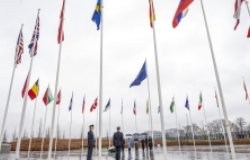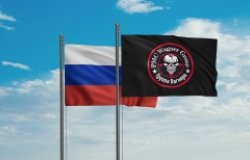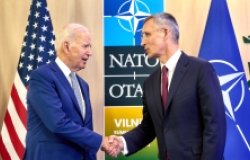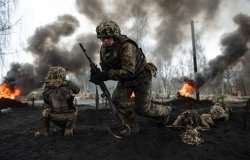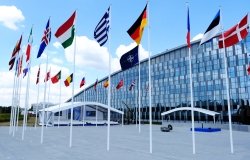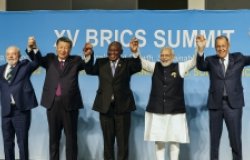179. The Kosovo Crisis: Some Lessons From Bosnia and The Fate of Southeastern Europe
Once again, NATO has been drawn into the search for the least bad solution in the Balkans. This time the crisis has surfaced in Kosovo, the province that, ten years ago, seemed to be the most dangerous ethnic flashpoint in what was then Yugoslavia. For the Serbs, Kosovo is politically and religiously attached to Serbia. For the Albanians, Kosova is demographically dominated by Kosovar Albanians and geographically contiguous with northern Albania. Today, both sides are armed, dangerous, and likely to keep fighting without an international agreement. Even with an accord, they are more menacing to the proposed NATO peacekeeping force than were the war-weary local forces in Bosnia and Herzegovina in 1995.
What is needed is a comparative and regional perspective to chart some constructive way out of the twin traps being set for NATO. The Alliance now faces either a truce between armed adversaries or an occupation after bombing the Serbian side. A military strike might turn out to be more "peaceful" for the province as the remaining Serbs in Kosovo would probably flee to Serbia. But the continuous Serb presence in the province deserves to be acknowledged as much as the current overwhelming Albanian majority. The civilians of all sides in Kosovo, Roma included, deserve the right to remain in their home regions and not to be forcibly evicted, a right denied Croatia's Krajina Serbs and Republika Srpska's Muslims.
In the short-run, the interim agreement of the six-country Contact Group (France, Germany, Italy, Russia, the United Kingdom, and the United States) could provide a stabilizing blueprint for Kosovo, provided that some lessons from the Bosnian experience are applied. Inapplicable is the dynamic of the Dayton peace process in which the international community has ended up having to labor to turn de facto partition into integration. In Kosovo, it will be necessary to work forward from smaller multi-ethnic districts. An appropriate model is the 1993 Vance-Owen Plan for ten Bosnian cantons, although there should be fewer, larger districts for Kosovo than the 31 outlined in the Rambouillet interim agreement. These districts should also be strengthened. The conclusions of a 1993 EES and International Research and Exchanges Board workshop devoted to Bosnia at the Wilson Center are applicable to the current situation. As in Bosnia, the newly-created districts in Kosovo would benefit immensely through demilitarization. Assuring the physical security of the civilian population demands the rapid deployment of external forces and the disarming of the ethnic armies (including their irregular units). Moreover, to protect human rights, the cantons should not be allowed to become exclusive ethnic territories. To this end, direct international participation will be required in judicial institutions and particularly within local police forces. In Kosovo, in other words, we need more than another unarmed and unsupported advisory force like Bosnia's International Police Task Force.
The co-chairs at the 1993 meeting, Profs. Steven Burg and Paul Shoup, concluded with a plea for a broader regional approach if any Bosnian peace agreement were to be self-sustaining, but they admitted that it was difficult to say what form it might take. Now six year have passed, Kosovo has finally exploded, and we must find that regional approach. Otherwise, as in Bosnia, NATO may find that once involved on the ground, it will be very difficult to extricate itself.
Post-1989 Southeastern Europe will either succeed together or fail together. A successful framework for reconnecting the entire region to Europe politically and economically serves a second imperative: it is a way to remove the United States and NATO from the prospect of having to establish permanent protectorates in Kosovo and in Bosnia and Herzegovina.
Any successful solution must reach beyond the successor states of the former Yugoslavia: from Serbia, Montenegro, and Macedonia to Albania, Bulgaria, and Greece, and from Bosnia, Croatia, and Slovenia into neighboring Italy, Hungary, and Austria. That solution must also go beyond a customs union (as suggested recently by Timothy Garton Ash in the New York Review of Books). It must include mutual recognition of borders and guarantees of individual security and transit. But the harder question is obviously who can and will do all of this?
Four parties will have to take the lead. They are the two groupings bordering the former Yugoslavia noted above—the south Balkan states and the Central European states—as well as the United States and the European Union (EU). Serbia, Montenegro, and any Kosovo regime still within the Yugoslav federation (at least for the three-year interim period) should be obliged to live up to the basic democratic standards established in the Helsinki process. The once-Habsburg borderlands, Croatia as well as Bosnia and Herzegovina, should meet an even higher standard, taking as a model the democratic credentials and meeting the market standards of Austria, Hungary, and Italy. Political leads from Sofia or Athens in the south, and from Vienna or Rome in the north would seem to offer the most promise for these two configurations of former Yugoslav states to define and deal with the political, economic, and security issues that will be needed to promote long-term stability and security in the region.
On the economic side, however, only the EU and the United States can supply the necessary resources and expertise. Both have already launched a series of worthy and well-intentioned initiatives, but these cover too many countries and bring too little financial commitment. The Americans alone have set in motion the Southeastern Cooperative Initiative with 11 countries from Turkey to Hungary as members, as well as the three-member South Balkan Development Initiative. The U.S. has also shifted the focus of AID and its SEED funds to Southeastern Europe. In addition, in the last weeks, the Clinton Administration has reportedly launched a renewed effort to coordinate American programs. Surely the time has come to combine or at least fully coordinate these initiatives with each other and with EU activities. What is also lacking is the commitment of adequate funds for these initiatives. But even several billion dollars a year for economic and political transition would still be strikingly less than the $12 billion that the two military peacekeeping activities in Bosnia and Kosovo are likely to cost this year.
About the Author

John R. Lampe
Professor Emeritus, Department of History, University of Maryland, College Park

Global Europe Program
The Global Europe Program is focused on Europe’s capabilities, and how it engages on critical global issues. We investigate European approaches to critical global issues. We examine Europe’s relations with Russia and Eurasia, China and the Indo-Pacific, the Middle East and Africa. Our initiatives include “Ukraine in Europe” – an examination of what it will take to make Ukraine’s European future a reality. But we also examine the role of NATO, the European Union and the OSCE, Europe’s energy security, transatlantic trade disputes, and challenges to democracy. The Global Europe Program’s staff, scholars-in-residence, and Global Fellows participate in seminars, policy study groups, and international conferences to provide analytical recommendations to policy makers and the media. Read more


